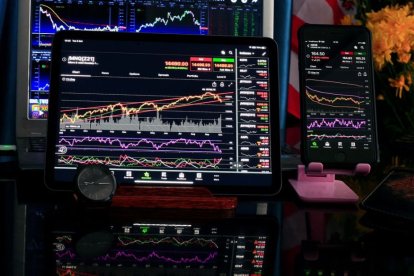Wall Street sees stocks drop a day before the Fed announcement and release of inflation data
The Federal Reserve began its monetary policy meeting Tuesday, which will focus on updating economic forecasts.

(Pixabay-sergeitokmakov)
(AFP / VOZ MEDIA) The New York Stock Exchange opened in the red Tuesday on the eve of a monetary decision by the Federal Reserve and new data on inflation, while the bond market and the dollar benefited from the prevailing uncertainty in Europe.
At market open, the Dow Jones dropped 0.61%, while the Nasdaq fell 0.19% and the expanded S&P 500 index fell 0.37%.
On Monday, Wall Street ended with a slight increase. The Dow Jones was up 0.18%, closing at $38,868.04 points. The Nasdaq ended up 0.35% at 17,192.53, and the S&P 500 advanced 0.26% and surpassed its previous maximum by reaching an average share price of $5,360.79.
The Fed begins monetary policy meeting
While Wall Street opened lower, the Federal Reserve began its monetary policy meeting, after which it will not modify its rates, according to market expectations, but will present an update of its forecasts for the world's largest economy.
The meeting of the Monetary Policy Committee (FOMC) "began at 10:30 a.m. local time (2:30 p.m. GMT) as planned," a central bank spokesperson confirmed to AFP.
The meeting will end on Wednesday with a statement at 2 p.m. EST, and Fed Chairman Jerome Powell will give his usual press conference half an hour later.
The market will focus on the Fed's updated economic forecasts, from which clues could emerge about the evolution of interest rates, which remain in a range of 5.25-5.50%, a high in the past two decades.
But above all, the Fed could establish whether they still think that there will be rate cuts this year and, if so, by how much.
The Federal Reserve acted on interest rates, raising them to make credit more expensive and thus discourage consumption and investment, which put downward pressure on prices.
The Fed pursues an annual inflation target of 2% in the United States. Some data on the cooling of the economy and a decrease in inflation rates encouraged the idea of making monetary policy more flexible so as to minimize its effect on economic activity. But an inflationary spike at the beginning of 2024 dampened spirits.
The market believes that if there is a cut, it will be in September or even November.
Twelve-month inflation in the United States reached 2.7% in April, according to the PCE index, the one preferred by the Fed. The updated consumer price index will be released on Wednesday morning, before the end of the meeting.
RECOMMENDATION





















